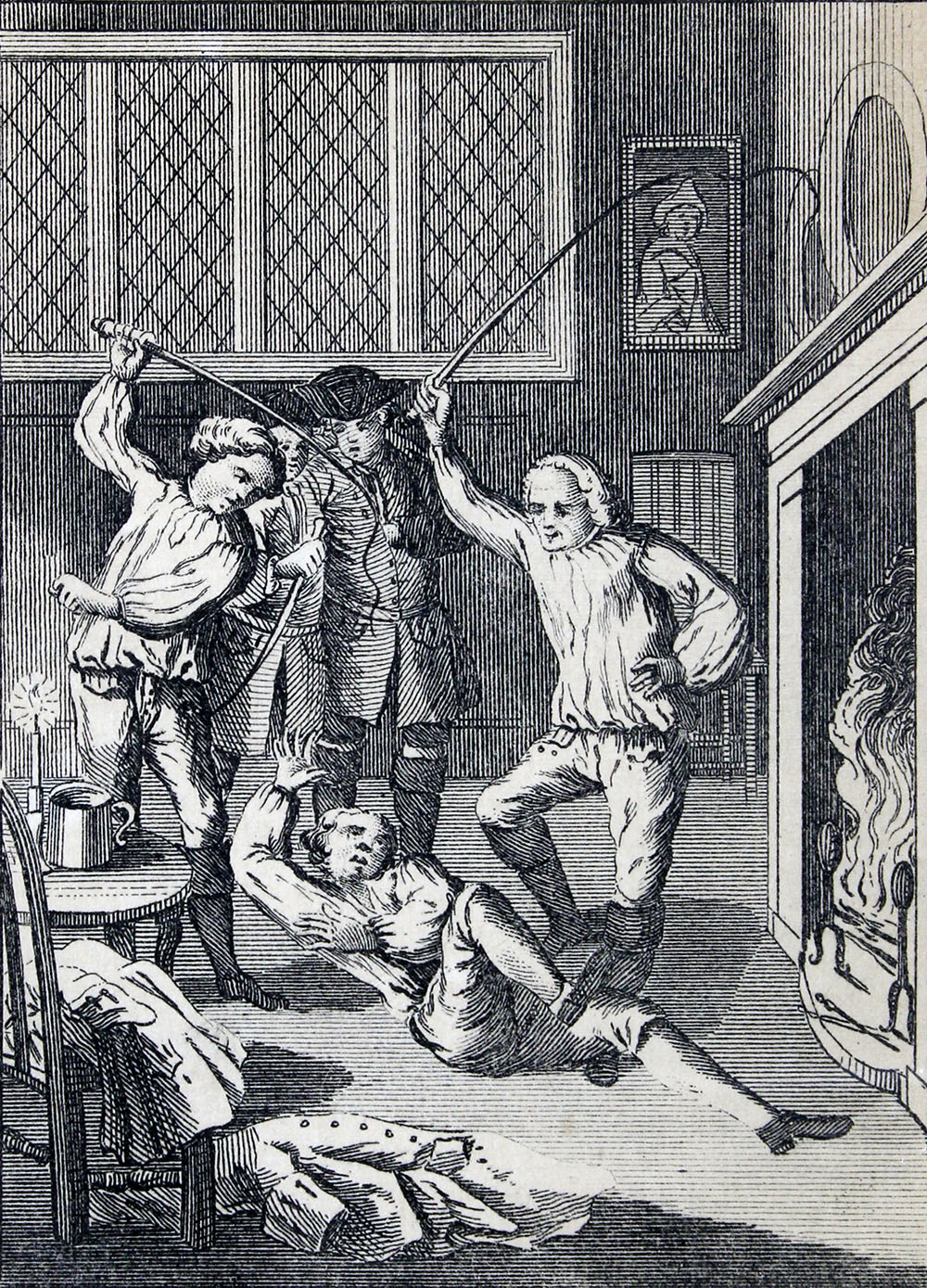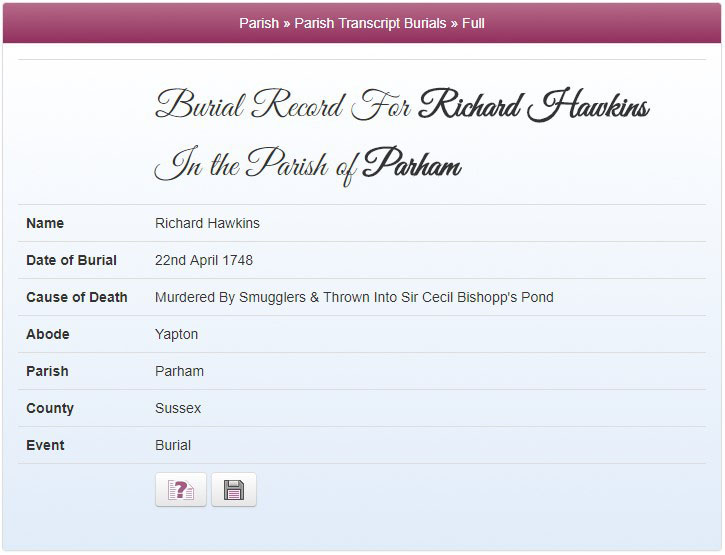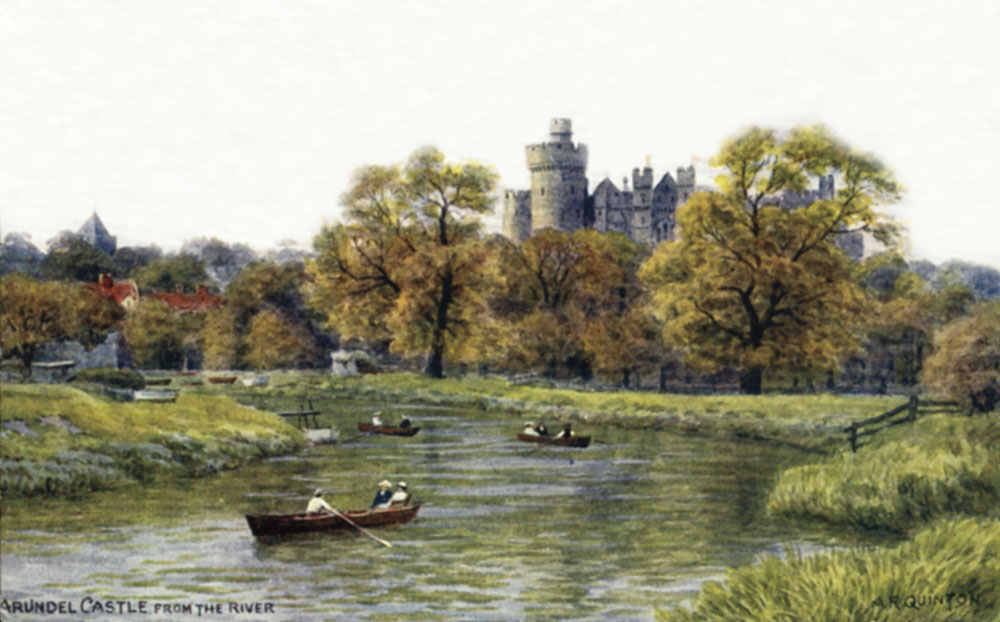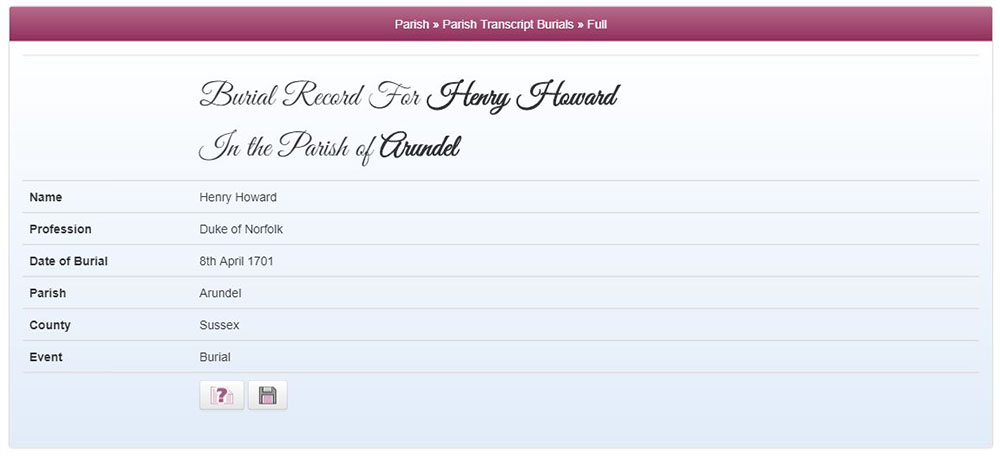One intriguing story revolves around a particularly violent gang of men who terrorised the South coast of England in the early 1740s. In these times the Hawkhurst gang, known smugglers who had already successfully raided the customs house at Poole and operated all the way up to the Kent coast, would often join forces with other local gangs to smuggle in contraband. Adopting the name from the Kent village of Hawkhurst, The Hawkhurst Gang, were always in control and had acquired a fearsome reputation for violence even against those with whom they had united with. At this time Jeremiah Curtis was a member of a Hastings gang that was working closely with the Hawkhurst Gang and Curtis already had a reputation as one of its most brutal members. When the suspicion fell on Richard Hawkins of stealing two bags of the gang’s smuggled tea they dealt with it in a typically brutal manner. Taking the farm labourer to the the Dog and Partridge inn at Slindon they interrogated him with Curtis taking the lead.

The whipping and beating that they gave him ended in Hawkins’ death after which they disposed of his body in the pond at Parham Park. In the notes to one of the entries in the Sussex Parish records we discover that Richard Hawkins was buried on the 22nd of April 1748 in Parham and the cause of death was that he had been ‘Murdered by smugglers and thrown into Sir Cecil Bishopp’s pond’.

Also in this new release we can discover one of the foremost families in England. Set in the South Downs is the medieval Arundel Castle and this is one of the longest inhabited country houses in England. The family, that since the 11th century and to this day call it their home, are the Fitzalan-Howards who have at their head the Duke of Norfolk. As the premier Duke in the peerage of England the 18th Duke had, between 1975 and 2002, been styled as the Earl of Arundel and as such was the premier Earl in England. In the Order of Precedence in the U.K’s sequential hierarchy for Peers, officers of state, senior members of the clergy and other persons in the three legal jurisdictions of the United Kingdom, the Dukes of Norfolk come after the Royals. The Duke of Norfolk is, moreover, the Earl Marshal and hereditary Marshal of England responsible for the organisation of major ceremonial state occasions like the monarch’s coronation in Westminster Abbey and state funerals. He is also a leading officer of arms and oversees the College of Arms.

An uneasy coexistence within the same church building
Despite centuries of England being a protestant country, the Dukes of Norfolk are renowned as Roman Catholics. In the western grounds of Arundel Castle there is a church building that is one of the very few which is currently divided into two worship areas. The western side of the building is occupied by the Anglican Parish Church of St Nicholas, Arundel while the Fitzalan Chapel, a Catholic place of worship, is now the private mausoleum of the Dukes of Norfolk and is a Grade I listed building. The east end of the church was built from 1380 onwards and consisted of the chancel, sacristy and Lady Chapel to the north. Even at the time that it belonged to the College of the Holy Trinity it was screened off by an iron grille from the parish’s place of worship in the nave and tower. Since the Reformation, the Fitzalans and Fitzalan-Howards have used it as a family mausoleum and thus it has been the final resting places of the Dukes of Norfolk for centuries.
Access Over a Billion Records
Try a four-month Diamond subscription and we’ll apply a lifetime discount making it just £44.95 (standard price £64.95). You’ll gain access to all of our exclusive record collections and unique search tools (Along with Censuses, BMDs, Wills and more), providing you with the best resources online to discover your family history story.
We’ll also give you a free 12-month subscription to Discover Your Ancestors online magazine (worth £24.99), so you can read more great Family History research articles like this!
![St Nicholas, Arundel, Sussex - Fitzalan Chapel by John Salmon [CC BY-SA 2.0 (http://creativecommons.org/licenses/by-sa/2.0)], via Wikimedia Commons](/images/featured-articles/2017/00646/sept17-sussex4.jpg)
As you may expect, the coexistence has not always been an easy one, with the Roman Catholicism of the family causing some tensions with the Church of England parish. This came to a head in 1874 when the 15th Duke of Norfolk built a brick wall across the west end of the chancel. According to Arundel Castle’s website ‘In 1879 it was determined that the Chapel did not form part of the Protestant parish church but was an independent ecclesiastical structure and therefore remains Catholic.’ It was not until 1979 when this physical barrier was eventually removed, but the mausoleum remains screened off from the rest of the church by a medieval iron grille and a modern glazed screen and to access the Fitzalan Chapel requires using the entrance in the castle grounds.
For this reason the Fitzalan-Howards appear in a number of burial records in the newly released Sussex Parish records on TheGenealogist which detail a burial in the Parish of Arundel (St Nicholas), but as they were interned in the Fitzalan Chapel they also feature in the Registers of Arundel within the books of Catholic Record Society Publications that can be found in the Occupational records on TheGenealogist. For anyone with Roman Catholic ancestors TheGenealogist has a number of helpful resources such as the Biographical Dictionary of English Catholics and Catholic Record Society Publications which we can use, in this case, to find various members of the Fitzalan-Howard family in compliment to those in the newly released Sussex parish records. Within the new records from the association between TheGenealogist and The Parish Record Transcription Society we can find the burials of six Dukes of Norfolk and a number of other members of their family.


These new records, along with the many other resources available on TheGenealogist Diamond subscription, will allow those with Sussex ancestors to research much deeper into their family story and find baptisms, marriages and burials in this ancient county on England’s south coast.






